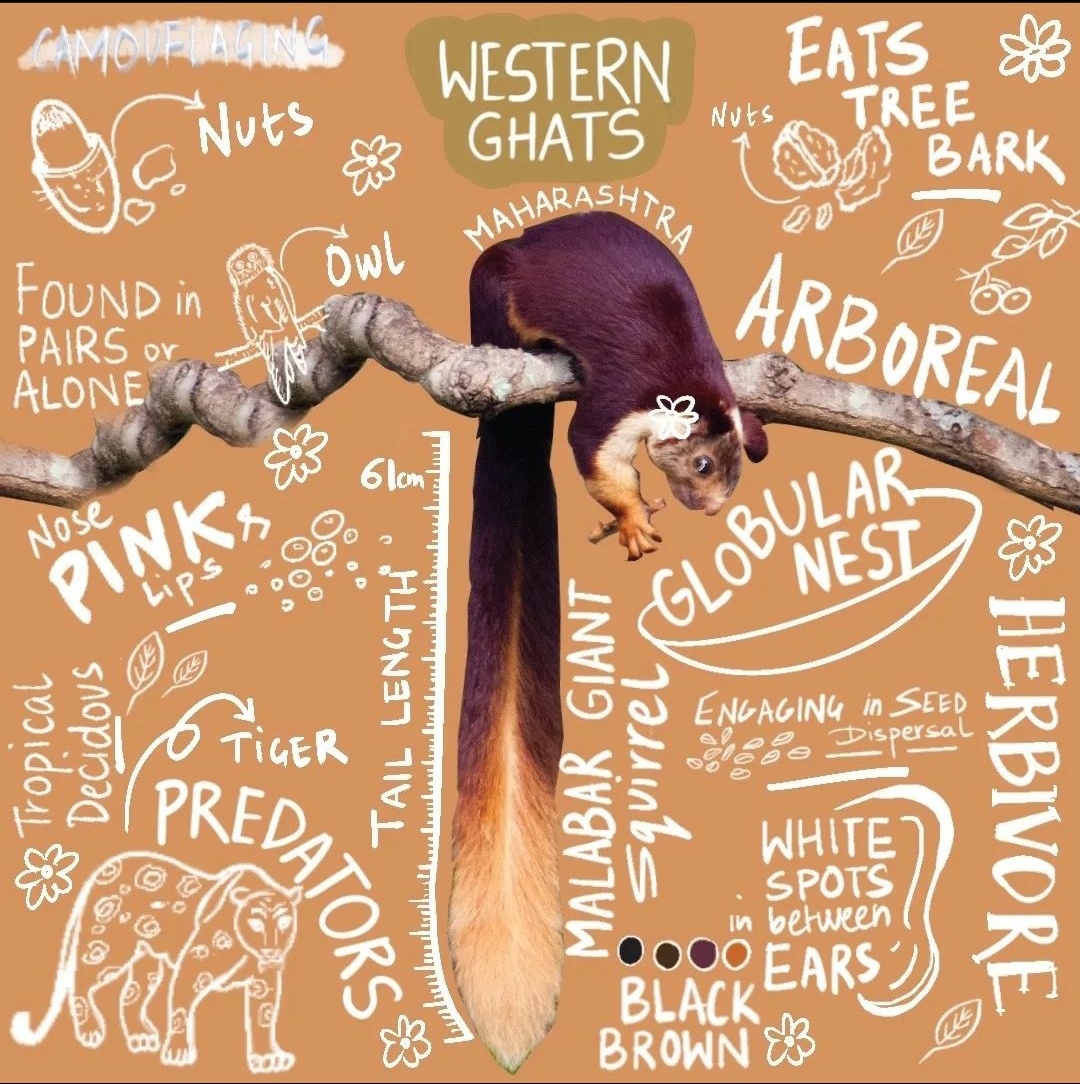
Spiritual Aspect of Living in a Forest | Beforest
December 1, 2023
The Indian Giant Squirrel: A Marvel in the Treetops
December 1, 2023Bengal Tigers: Pride of the Indian Subcontinent
The Bengal tiger, scientifically known as Panthera tigris tigris, is not just a magnificent big cat but one of the most iconic and charismatic species in the world. Known for its striking orange coat adorned with dark stripes, which are its identifying visual characteristics, the Bengal tiger is the most populous tiger subspecies worldwide and is found primarily in the Indian subcontinent. This regal creature has captured the imagination of people around the globe and is often considered a symbol of strength and power.
The geographical distribution of Bengal tigers extends beyond the Indian subcontinent, encompassing India, Bangladesh, Bhutan, and Nepal. In the past, their range extended further into Myanmar and even into parts of Pakistan. However, due to habitat loss and human-wildlife conflict, their distribution has become more fragmented, with isolated populations in various protected areas. A large number of these tigers can be spotted in the protected national parks and unchartered wild territories of India, where they take their rightful place as the national animal of our country.
2nd Largest Tiger in the World
Bengal tigers are the 2nd largest among the tiger species, after the Siberian tiger (Panthera tigris altaica). Both males and females weigh from 200 to 260 kg (440 to 570 pounds). The size of big tigers can go over 300 kg (about 660 pounds). Their size and strength make them apex predators in their ecosystems. These majestic cats are highly adaptable and thrive in diverse habitats, ranging from dense mangrove swamps and tropical rainforests to dry grasslands and mixed deciduous forests. They are excellent swimmers and are known to inhabit the Sundarbans, the world’s largest mangrove forest, where they navigate through a network of water channels in search of prey.
Ecological & Cultural Significance of the Bengal Tiger
The Bengal tiger plays a crucial role in maintaining the balance of ecosystems in which it resides. As an apex predator, it helps control the population of herbivores, preventing overgrazing and promoting the health of plant communities. By doing so, tigers indirectly contribute to the overall biodiversity of their habitats. The intricate web of life in these ecosystems relies on the presence of top predators like the Bengal tiger to maintain a healthy and functioning balance, making them one of the keystone species in their ecological habitats.
In India, the Bengal tiger holds a special place in cultural and religious contexts. It is often associated with various Hindu deities and is revered as a symbol of power and divine energy. The tiger has also been an integral part of Indian folklore and mythology, featuring prominently in stories and fables celebrating its strength and agility.
The tiger’s image is also found on various emblems, coins, and symbols, emphasising its cultural significance in the country. The Bengal tiger makes a proud appearance not just in the emblem but also in every campaign of Madhya Pradesh Tourism, representing the cultural significance of this big cat as well as its vital role in the region’s forest ecosystems. This has made Bengal tigers ecological ambassadors or flagship species of specific regions to promote conservation efforts and form an emotional connection with the people.
Threats to Bengal Tigers and Conservation Efforts
Despite their revered status, Bengal tigers face numerous threats that endanger their survival. Habitat loss due to human activities, including deforestation and urbanisation, is a significant challenge. The encroachment of human settlements into tiger habitats increases human-tiger conflict as tigers may prey on domestic animals. Illegal poaching for their skins, bones, and other body parts is another severe threat. The demand for tiger products in traditional medicine and as luxury goods continues to drive this illegal trade.
Adopting effective conservation measures is vital to ensure the survival of Bengal tigers and the ecosystems they inhabit. Organisations of all scales and capacities involved in sustainable development and wildlife conservation play a key role. Preserving and restoring their natural habitats creates wildlife corridors connecting fragmented areas. This can enhance the tiger’s ability to roam freely and maintain genetic diversity.
Furthermore, involving local communities in conservation efforts is crucial. Educating them about the importance of tiger conservation and implementing community-based initiatives can reduce human-wildlife conflict and garner support for protection measures. In addition, robust anti-poaching efforts, including increased patrolling and the use of technology such as camera traps, are essential to combat illegal activities threatening Bengal tigers.
Providing alternative livelihood options for communities living near tiger habitats can alleviate pressure on the forests. Sustainable agriculture (such as permaculture farming) and eco-tourism initiatives can offer economic alternatives without harming the environment. This is perhaps one of the most effective and holistic ways of conserving their habitats.
(Looking for a wilderness eco-retreat? Check out our Coffee Estate Stay in Coorg: Blyton Bungalow)
All of this requires a considerable amount of learning and unlearning and giving the people, as well as the ecosystem, enough time to merge into an environment of coexistence. At Beforest Collectives, we have set out to explore this alternate way of life – a forest-friendly lifestyle. Spanning 100+ acres each, we preserve 50% of the landscapes as a minimal intervention wilderness zone to maintain habitat continuity and also enable carbon sequestration. Our Poomaale 1.0 Collective in Coorg is a testament to this harmonious existence with the wilderness of the Western Ghats and is home to active elephant corridors that connect forests that stretch several kilometres beyond our collectives. With our upcoming Bhopal Collective, located in the heart of India and just an hour’s drive from Bhopal city, we aim to bring the same values of coexistence with the diverse wildlife of central India through our large-scale permaculture farming and biodiversity conservation efforts.
If you see yourself as an advocate of sustainable lifestyles and actively work towards building a place that welcomes all beings of nature, join the community of the Bhopal Collective.




